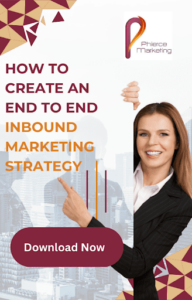In the current digital landscape, building a holistic business strategy without including Inbound Marketing is like going into battle with one hand tied behind your back—it just doesn’t make sense. Inbound Marketing isn’t some specious industry buzzword—it’s a powerful, strategic tool designed to attract, engage, and delight customers in a way that’s organic, audience-targeted, and fiercely effective.
But let’s lay it bare—crafting an inbound marketing strategy isn’t a stroll in the park. This technique employs a specific array of elements like SEO, content creation, social media strategy, lead nurturing, and more. When aligned, these elements build a dynamic relationship with your audience, driving conversions, fostering customer loyalty, and ultimately, scaling your business growth.
Here, we unpack the nine critical steps you need to articulate a comprehensive inbound marketing strategy. Remember, this isn’t about taking shortcuts or one-size-fits-all formulas—it’s about practical, measured, and strategic efforts that cater to your unique business goals and audience needs. Winners adapt, and in today’s ever-evolving digital environment, inbound marketing could be your winning move.
1. Define Your Buyer Personas: Crafting Your Marketing Blueprint
Let’s cut to the chase: an effective inbound marketing strategy begins with understanding your target audience. And no, vague or generic audience descriptions won’t cut it. What you need are detailed, comprehensive buyer personas.
Buyer personas are semi-fictional representations of your ideal customers based on real data, market research, and some educated guesswork. They’re more than just demographic details—buyer personas encompass information about the behaviors, motivations, goals, and challenges of your target consumers.
To clarify, you’re not fabricating these personas from thin air; you’re sculpting them with data and research as your chisel. So, let’s lay out the honest-to-goodness process of assembling these buyer personas:
Conduct Market Research: Begin by collecting demographic details (age, income, geography, job role) from existing customers. Use surveys, feedback forms, and even one-on-one interviews for deeper insights. Dive into your website and social media analytics to perceive patterns and trends.
Identify Customer Goals and Challenges: Understand what your customers intend to achieve and what obstacles stand in their way. This insight informs how your products or services can align with their objectives and solve their issues.
Spot Patterns and Trends: Analyze the collected information. Group similarities, notice trends, and use this data to mold multiple buyer personas.
Remember, creating buyer personas is not a set-and-forget task—it requires regular refinement. Your customers evolve; so should your understanding of them. Investing in defining your buyer personas is about making smarter, more informed marketing decisions that drive genuine results.
Defining buyer personas isn’t some half-hearted step you can skip. It provides pivotal direction and focus to your marketing efforts, enabling you to truly engage with your audience, resonate with their needs, and essentially, accelerate your business growth. Trust us—it’s a real game-changer.
2. Outline Your Marketing Triggers: Hitting the Right Notes at the Right Time
In the realm of inbound marketing, timing and context are the equivalent of a secret sauce. This is where Marketing Triggers come into play. But what are these triggers, you ask? Let’s break it down without any frills.
Marketing Triggers are events that spur your potential customers to decide they’re ready to make a purchase. In straightforward terms — these are the lightbulb moments that nudge your audience from mere interest to decisive action. But here’s the thing — these triggers aren’t one-off events that you stumble upon accidentally. Identifying and utilizing these triggers requires careful analysis, strategic thinking, and on-the-nose timing.
So how can you zero in on your marketing triggers? We’ve got you covered:
Analyze Your Buyers’ Journey: One size does not fit all. The triggers vary for each stage of your buyer’s journey — awareness, consideration, decision. Dig deep to understand what prompts your audience to move between these stages. It could be a revolutionary industry report, an impeccable product demo, or even a persuasive customer testimonial.
Dive Into Your Data: Study your website analytics, email campaigns, and customer survey data. Track when leads engage with your content, when they convert, or when potential sales fall through. Look for patterns and insights that can help you pinpoint triggers.
Test and Refine: As with all aspects of your inbound marketing strategy, finding your triggers is a process that requires continual testing, learning, and refining. Regular A/B testing, for instance, can help you identify what content, CTA, or design elements ignited a response.
Successfully harnessing marketing triggers can be the make-or-break difference in your inbound marketing strategy. It’s about knowing when to strike, what to say, and how to say it. But let’s be crystal clear—clipping in these triggers isn’t about forcing a sale; it’s about providing value at the right time, in the right context—giving your audience what they need, precisely when they need it.
3. Create a List of Keywords: Fueling Visibility and Relevance
Let’s pull back the curtain on the critical role that keywords play in your inbound marketing strategy. Keywords are far more than just search buzzwords or SEO jargon—they are the lifeline that connects your content with your target audience, driving visibility, relevancy and ultimately, your online success.
But let’s call a spade a spade—keyword strategy is not about stuffing your content with popular terms and hoping for the best. It’s about penetrating the minds and the search habits of your audience. It’s a strategic balancing act that primarily considers relevance, search volume, and competition.
So how do you choose the right keywords, you wonder? Follow these strategic paths:
Understand Your Audience: Reflect on your buyer personas and ask: What words or phrases would they use to find a business like yours? What problems do they need to solve and how might they phrase those issues?
Use Keyword Research Tools: Tools like Google’s Keyword Planner or SEMrush are not skippable luxuries; they’re your shortcut to intelligent keyword selection. They provide you with necessary insights about search volume, competition, and even suggest related keywords.
Consider Long-Tail Keywords: Long-tail keywords—keyword phrases with three or more words—are more specific, carry less competition, and are better aligned with searcher intent. Think quality over quantity here.
Check Out the Competition: But don’t just clone your competitor’s keywords—analyze them. Understand what works, what doesn’t, and let these insights shape your unique keyword strategy.
We’ll spell it out for you: Keywords are not just to ‘game’ search engines into ranking you higher. They should be carefully selected to truly match your target audience’s search habits, thereby improving your content’s relevance and visibility.
Creating a list of effective keywords is not guesswork—it takes research, strategic thinking, and a solid understanding of your target audience. Strategies that are data-driven, meticulously researched, and persistently refined will be the most successful. It’s not just about adding a notch to your keyword count but to fuel your visibility, enhance your relevance, and supercharge your growth.
4. Set Your Inbound Marketing Goals: Chasing Clarity, Not Clouds
Let’s be blunt: aimless marketing is like taking a road trip with no destination in mind—you may enjoy the ride, but where are you going to end up? In your inbound marketing journey, setting clear, measurable goals isn’t just good practice—it’s the benchmark that aligns your tactics, keeps your team’s efforts focused, and ultimately, measures your marketing ROI.
It’s easy to state, “We want to grow our business.” But, what does that mean tactically? Are you seeking to increase website traffic, amplify your conversion rates, or perhaps boost customer retention?
To curve the path towards actual growth, instead of wishful thinking, follow these strategic insights:
Align with Business Objectives: Your marketing goals need to reflect your broader business objectives. Looking for a 25% increase in sales? Gear your marketing team towards improving lead quality and nurturing tactics.
Be Specific and Measurable: Vague goals gather dust. Instead of “increase website traffic”, strive for: “achieve a 20% increase in website traffic over the next quarter”. Precision paves the path to progress.
Ensure Your Goals are Achievable: Lofty goals might sound impressive but can set your team up for failure. Set challenging, yet realistic goals based on past performance, industry benchmarks, and your current resources.
Time-Bound Goals: Open-ended goals lose momentum. Attach deadlines to your goals to instill a sense of urgency, prompt action, and allow for progress tracking.
We’ll tell it like it is: Practicing inbound marketing without clear goals is just paddling in the dark. It consumes time, resources, and leaves you circling in doubt. But with strategic, well-defined goals, you have a voyage map that outlines where you’re heading, and how you’ll get there.
And remember, it’s not just about hitting targets—it’s about knowing what those targets are, why they matter, and how exactly you’re going to hit them. Don’t take wild shots in the dark; strategize, execute, measure, and optimize for an intelligent path to your business growth.
5. Outline Your Content Strategy: Sculpting Value, Not Just Words
Without mincing words, here’s the plain truth: Content is the lifeblood of your inbound marketing strategy. It attracts, engages, and delights your audience, turning strangers into visitors, visitors into leads, and leads into customers. But, producing content willy-nilly isn’t the answer. Quality trumps quantity.
An effective content strategy is not about churning out blog posts, videos, or social media updates on a whim—it’s about shaping valuable, relevant content that solves your audience’s problems, addresses their needs, and positions you as the go-to expert in your field.
Are you ready to put some meat on the bones of your content strategy? Follow these pointers:
Understand Your Buyer Personas: Remember those meticulously crafted buyer personas from step 1? They’re not just for show—use them as a compass to guide your content creation.
Set Clear Goals: Whether it’s increasing web traffic, boosting engagement, or generating leads—define what you want to achieve with your content.
Carry Out a Content Audit: Evaluate your existing content. What worked? What flopped? Use these insights to streamline your content creation efforts.
Plan and Schedule Your Content: Don’t rely on spur-of-the-moment inspirations. Create a content calendar outlining what to post, when, and where.
Optimize for SEO: Those painstakingly researched keywords are not decorations—embed them into your content to enhance visibility and drive organic traffic.
Creating a comprehensive content strategy isn’t a vanity project—it’s a critical aspect of effective inbound marketing. It ensures your content isn’t just sound and fury signifying nothing, but is actually purposeful, worthwhile, and aimed at driving real results.
It’s not about flooding the online space with forgettable content. It’s about creating valuable, strategic content that magnetizes attention and advances business growth. Trust us, a thoughtful content strategy pays more than just lip service—it builds authority, supports lead generation, and fosters long-lasting relationships with your audience.
6. Design Your Lead Nurturing Process: Nurturing Seeds, Not Just Sowing Them
Lead nurturing is not just another buzz term. It is arguably one of the most critical aspects of your inbound marketing strategy. In simple language, lead nurturing is the process of developing relationships with buyers at every stage of the sales funnel and throughout the buyer’s journey. It places a particular emphasis on listening to the needs of your prospects and providing the information and answers they need.
Cultivating these relationships isn’t about bombarding your leads with generic sales pitches or constant calls to action. It’s about guiding leads through the sales funnel at their own pace—providing relevant content and personalized interactions that resolve their issues and uncertainties.
Ready to enrich your lead nurturing process? Follow along these strategic tracks:
Segment Your Leads: Not all leads are created equal. Segment them based on the actions they’ve taken, their place in the buying cycle, or their specific needs. Tailoring your communication to these segments will help establish a direct, meaningful connection.
Provide Valuable Content: Your content should not only answer your leads’ questions but do so in an engaging, relatable manner. Use blogs, email marketing, e-books, and more to deliver the right content at the right time.
Use Automation Tools: Utilizing lead nurturing automation tools can help ensure consistent and timely communication with your leads. But remember—automation is not a substitute for a personal touch.
Monitor and Adjust: Just like any other tactics in your inbound strategy, refining your lead nurturing process requires monitoring results and making necessary adjustments.
A ‘spray and pray’ approach doesn’t cut it with today’s consumers. People don’t want to feel like a number on a list—they want personalized, relevant interactions that address their specific needs and wants.
Don’t focus solely on attracting leads— aim to foster lasting relationships. Nurture your leads with strategic precision, drawing them towards a logical conclusion in their buyer’s journey: choosing your business as the one to solve their problems and fulfill their needs. Converting leads is not about pressure—it’s about building trust, delivering value, and fostering ongoing engagement
7. Create a Conversion-Focused Blogging Strategy: Blogs That Don’t Just Speak, But Sell
When we say “blogging,” you might think of personal online diaries filled with opinions and musings. However, when done right, it is a formidable inbound marketing tool. It enhances your visibility, boosts credibility, establishes authority, and drives meaningful engagements.
However, unstrategic blogging is merely vanity publishing. Your conversion-focused blogging strategy should be crafted to connect audiences to your brand, persuade them of your value, and encourage them to take action. So how do you create a blogging strategy that delivers results, not just rambles? Consider these strategic insights:
Focus on Relevance: Captivating storytelling matters, but so does relevance. Align your blog content with your target audience’s needs and pain points, addressing their most pressing questions and challenges.
Incorporate CTAs: The most compelling blog posts won’t yield conversions if they don’t lead to a specific action. Strategically incorporate CTAs that prompt readers to further engage with your brand, whether it’s downloading an e-book, signing up for a webinar, or reaching out for a consultation.
Leverage Analytics: Trust your data. Analyze which blog topics resonate with your audience, which generate leads, which drive traffic to high-converting pages, and gear your strategy towards their successes.
Optimize for SEO: Don’t neglect your keyword research. Include relevant keywords into your blog content to make it more discoverable, driving organic traffic, and increasing your blog’s reach.
Let’s nail it down: Blogging, when tailored to your audience’s needs and designed to inspire action, is a fierce catalyst for lead generation and conversions. Creative storytelling that doesn’t convert stays on the shelf, collecting dust—meanwhile, strategic blogging drives action.
Don’t just churn out fluff pieces— create blog content that connects, engages, and converts. Focus on conversion-focused strategies that propel your online presence while driving tangible results—not just empty claps and likes. Crafting a winning blog strategy requires more than words—it requires vision, knowledge, and unrelenting focus on turning your audience into loyal customers.
8. Implement an Inbound Marketing Platform: Harnessing Tools, Not Just Using Them
Inbound marketing isn’t some hasty act—it’s a systematic orchestration of tactics that aims to attract, engage, and delight your audience. This orchestrated movement doesn’t happen by sheer coincidence—it rests on the foundation of powerful inbound marketing platforms. To handle the intertwined facets of an inbound marketing strategy, a robust and comprehensive toolset is not a luxury—it’s an absolute necessity.
Prominent platforms such as HubSpot> and Keap are industry-standard choices, providing a suite of integrated tools that manage everything from SEO and content to lead nurturing and performance analytics.
HubSpot, as an all-encompassing platform, offers capabilities ranging from blogging and SEO to social media and email marketing. It’s popular not just for its array of features, but its ability to track the customer journey, leading to real, actionable insights.
Keap (formerly Infusionsoft) is lauded for its stellar CRM features and email marketing capabilities—ideal for small businesses looking to manage customer relationships, segment audiences, and create personalized communications.
Choosing the right platform for your business isn’t a matter of popularity—it’s about strategy and alignment. Consider the following tips when determining your platform:
Identify Your Needs: Different platforms cater to varying marketing needs. Map your inbound marketing strategy, identify the tools you’ll need, and choose a platform that best aligns with these requirements.
Gauge Usability: An overcomplicated platform can shackle your progress. Choose a platform that’s user-friendly, intuitive, and won’t require excessive onboarding time or resources.
Consider Integration: The best inbound marketing tools should seamlessly integrate with your existing systems, whether that be your CRM, analytics software, or email platform.
Evaluate Cost: Look beyond the sticker price. Consider the scalability, features, and potential ROI a solution offers before making a decision.
Implementing an inbound marketing platform is not about following fads—it’s about driving efficiency in your marketing efforts and repelling chaos.
Keep in mind, it is not just about using tools—it’s about harnessing their potential, using them as more than ‘support’ but for strategic implementation of your carefully built inbound marketing plan. Remember, the choice and implementation of these tools should empower your inbound strategy, not complicate it.
9. Build a Team of Inbound Marketing Experts: Sculpting an Expert Unit, Not Just Hiring
Your inbound marketing strategy is as robust as the team behind it. Building a skilled team is more than a “good to have”—it’s an anchors-down must. These are the people who will walk the talk, fine-tuning an inbound marketing strategy that isn’t just lip service but a real game-changer.
Building this squad isn’t a walk in the park—it isn’t about just hiring and hoping for the best. It’s about sculpting a collective profoundly versed in inbound marketing’s intricacies. Follow these strategic steps to form such a team:
Define the Roles: Delineate the roles and responsibilities within your team. Every successful inbound strategy rests on the expertise of strategists, SEO wizards, content crafters, data analysts, graphic designers, and more, all playing their roles in harmony.
Hunt for Skills and Personality: Proficiency in inbound marketing is the bare minimum. You also need a team that can collaborate, adapt, and consistently sweat the small stuff to amplify impact.
Invest in Regular Training: Inbound marketing is an ever-evolving beast. To maintain an edge, regular training to update your team’s skills is non-negotiable.
Promote Teamwork: Foster a culture that thrives on collaboration. Remember, the most effective solutions often emerge from a melting pot of diverse ideas.
But what if the task of building this squad seems daunting? We won’t sugarcoat it—it can be.
That’s where outsourcing comes into play. If crafting an inbound team in-house feels like a steep mountain to climb, outsourcing your inbound marketing plan’s creation and execution to seasoned professionals is a sound strategy.
The right partner will bring aboard a pre-built team of diverse talents, making your life a shade easier and your outcomes markedly better. But remember, outsourcing isn’t a shortcut—it’s a strategic decision that still requires choosing a partner whose values align with yours, who tells it like it is, and who offers more than just pretty numbers.
This partner should also have the ability and be willing to work closely with your current internal team, bringing their skills to a higher level in the process of collaborating.
In other words, don’t just gather a team to fill chairs— meticulously shape a skilled and synergized outfit that lives and breathes inbound marketing. An elite team is not a checkbox—it’s your secret weapon to driving real, tangibly better outcomes.
The Art of True Inbound Marketing—Crafting Strategy, Not Just Completing Tasks
In this inbound marketing odyssey, we’ve been raw, real, and relentless in expressing the truth—building a winning inbound marketing strategy is no walk in the park. But don’t be fooled into believing it’s a feat out-of-reach. All it takes is a commitment to a coherent and well-conceived plan—one that hits the bullseye with precision, rather than blindly throwing darts at a board.
Remember, real results don’t happen by accident or by merely paying lip service to a fancy term. They’re forged in the fire of strategic thinking, hard work, and an unwavering commitment to growth.
At Phierce Marketing, we don’t peddle pretty numbers—we forge strategies that thrust businesses forward. A well-honed inbound marketing strategy is a tangible product of skill, partnership, and synergy—the very qualities that define our essence.
So set sail on your inbound marketing journey with a thorough and unshakeable plan, one where every action traces back to strategy, and watch your business reach new shores of unprecedented success.






